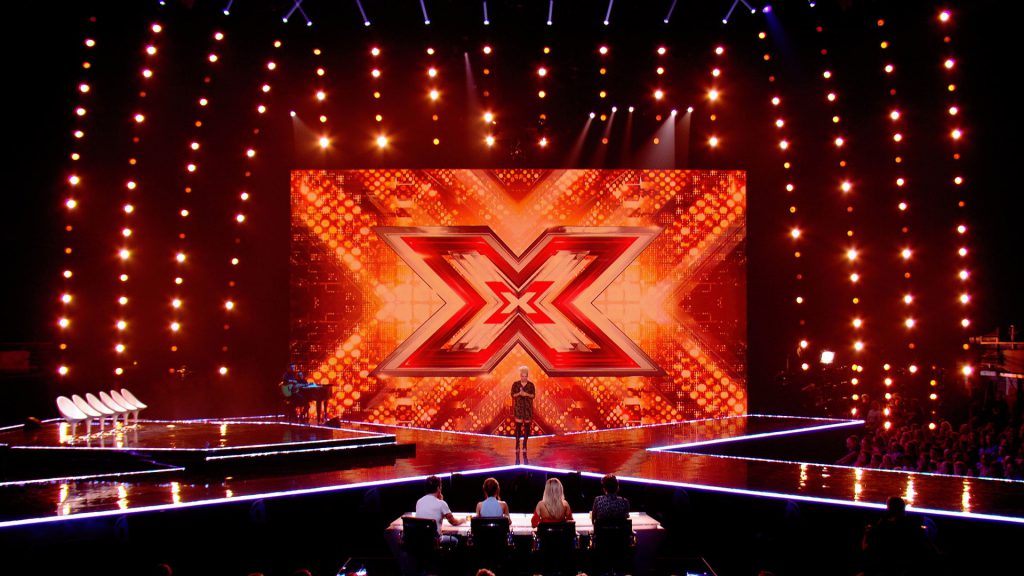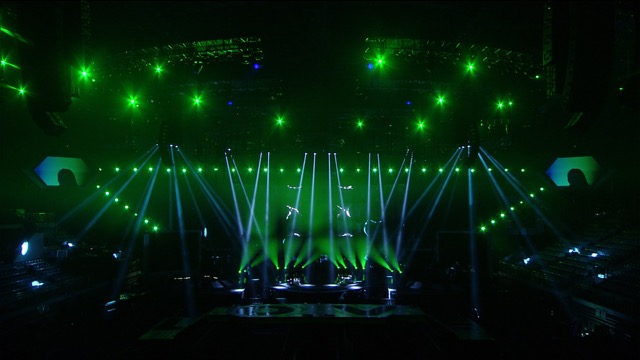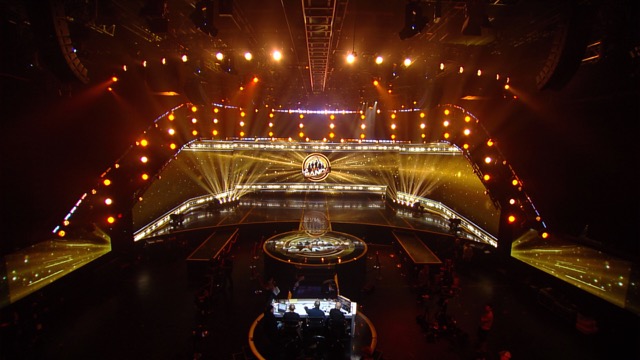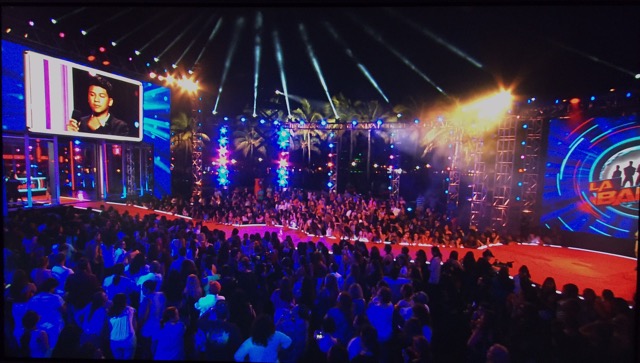Tom Sutherland: Lighting The Dream
Posted on December 27, 2016
A self-described “impatient big dreamer,” this London designer has never been one to wait for opportunities to come to him. At 12, he was writing letters introducing himself to leading designers in the city’s West End and major television networks. Four years later, he was programming his first national TV show. At 22, he became the youngest designer to be nominated for a Knight of Illumination Award for his work on The Red Hot Chili Peppers Koko concert.
Still shy of his 28th birthday, Sutherland has since added two more Knight of Illumination nominations to his portfolio, along with high-profile stints as the designer on projects ranging from The X Factor and Simon Cowell’s La Banda, to Adam Lambert’s World Tour and China’s largest independently televised New Year’s Eve celebration, a program viewed by 150 million people.
Although Sutherland has reached dizzying heights in his profession at an age when many of his contemporaries are just getting on track, the dreamer in him is still as restless as ever—and the dreams are just as big and brash. Only now those big dreams are not for his career directly, but for his designs. Mixing light, darkness, multimedia elements and trussing, he is fiercely determined to give his broadcast work an expansive look that transcends the limitations of a studio set and makes viewers feel they are immersed in a live event, rather than watching a program on television.
Speaking to us from the Miami office of his company, DX7 Design, Sutherland offered some thoughts on creating big looks on broadcast sets. Going beyond the technical aspects of lighting, he also shared his insights into something at the heart of his design process: the ability to dream big.
You started serious lighting design at a very young age, working on a prime time ITV show when you were only 16. A lot of kids don’t have a clue about what they want to do with their lives at that age. Did you ever want to be anything other than a lighting designer?
“Actually, I was about 12 when I started doing lighting. My first experience was lighting school productions. I was drawn to it. I had a lot of passion for it—and knew I wanted to keep doing it. So I sent letters off to theaters in the West End of London. I was too young to know how unlikely I was to get those letters answered! Then, quite incredibly Mark Kenyon of Strictly Come Dancing got back to me. So I went to the BBC to watch Mark and other designers work. I would sit between the programmers, and from time to time they would let me push a few buttons. The first show I did when I was 16 was Johnny & Denise Passport to Paradise.”
How did this show come about for you? Were you nervous, being that you were only 16?
“The programmer came down with the flu one week and Mark asked if I could do that. I said ‘yes.’ It was my 16th birthday; it was a great present. I am not the world’s most patient person and I really wanted to do this. This led to me getting moving light technician work when I was still 16. Was I nervous? Not really, because I had great supportive people around me. I was a bit scared perhaps, but I would have been much more nervous if I was surrounded by negative people, but I had very positive people who all believed in me.”

Flash forward to the present, you’ve done a great deal of stellar work for television. One of the wonderful things that struck us about your broadcast projects is that your lighting really makes them look like live productions rather than television. How do you create this kind of look?
“Nice of you to point that out. For me this design philosophy comes from my own personal preferences. When I’m home watching television, one of the concepts in my brain is that I want to feel like I’m out there live watch something in person, not watching it on a television screen. So, this is my overriding goal when I design. I start with this dream –a dream of making my set look large. After I do this, I look at the budget. The reality of a budget may intrude on the dream I have for my design, but at least the dream is still there in my mind. My challenge then becomes, how do I get my million dollar dream into a more modest budget? This often involves taking elements of a large scale show and bringing it into a broadcast studio environment. Perhaps substituting one fixture for another. Maybe it requires me moving things around or flying fixtures in a different way. Regardless of what it takes, if you care about your dream enough, you’ll find a solution.”
Another thing we’ve noticed is that the architectural structure of truss seems to be really important to your designs. Can you tell us about the interplay of lighting and truss in your designs? Which do you think of first in the design process? How do you get them to work together?
“I feel that a design needs a sense of geography, and truss/the layout of fixtures helps you achieve that on the set. When you use curved truss you get a sense of depth; curves are really an infinite shape. So I am partial to using them, because they help me create the big looks that we just discussed, while still fitting within the realities of budget and the realities of spatial limitations.
“When I bring friends to a studio and they see my set, they often express surprise. They tend to say that they didn’t realize the set was so small! They ask, ‘How did you make it look so big on the television?’ When they say these kinds of things, it makes me feel like I did my job. Creating this illusion of bigness depends on creating a sense of architecture in your design.”
Although your design creates big looks on the set, you’ve never been one for simply throwing brighter and brighter lights out there. You also incorporate darkness into many of your designs. Can you tell us about that?
“I always base my design on a lot of elements – and all of those elements are never to be used at once. I always plan on bringing out different bits of light and shade at different points. One person standing in shade can be as strong as blasting them with light. So yes, weaving darkness in with the light can make a show more powerful.”
When you begin to design for television, how does the process start? What are the things you look at first?
“I always try to collaborate really heavily with the set designer at the start of a project. If the set designer created a set that doesn’t work with your lighting, than you have an issue. So I always get together with the set designer to make sure we are coordinating our efforts.”
So what advice would you give on collaborating with set designers?
“Be nice, be very, very nice! Every idea is a good idea, so I never shoot another person’s idea down. This is important to remember when you’re dealing with set designers or anyone else. You have to have respect for their creative process if you want them to respect yours.”
What software do you design in?
“WYSIWYG, I really like. It is great for me I do all of my plans on it. I often scrap my ideas and I can go back and restart. I went through four designs on The X Factor. I always bank the idea in my head maybe in the future. I never try to push a square peg in a round hole.”
Broadcast lighting has become more elaborate with a wider array of eye candy fixtures being used all the time. How do you keep this lighting from interfering with key lighting?
“It is always a balance. I am very much a vision person – I want it to look big and bold, but then again you have to ensure that it looks good for close-ups. This is where my great teams of programmers come into play. You on occasions want to push intensity for wide shots, then make sure your programmer turns things down when the camera gets close. The vision engineer in the truck also has to adjust. This part about the vision engineer is something that is too often overlooked. My theory is that vision engineers are in actuality the third programmer on a broadcast project. I make sure to include them in my discussion exchange ideas. I make them feel appreciated and I’m open to their suggestions. Projects are more intricate today, so you need this level of collaboration.”

Speaking of lighting being more intricate, is there one thing that stands out for you as the most challenging part of lighting for television?
“When you light for a concert or theater, your audience is just in front of you. With television you have 16 cameras so basically you have 16 eyes looking at you from all these different directions. This means that your positioning has to be critical. When we do a rehearsal, I have it recorded on my laptop so I can make sure every cue is clean and tidy and our positioning is all good.”
In La Banda you used a lighted candle video background to great effect. Can you share your ideas about using video on the set? Can it be over used? Do you have a preference for projection or LED video walls?
“My preference is video wall over projection. You have to work with graphic designers very closely if you want your video walls to work properly, so again it comes down to collaboration. A lighting designer has to have collaborative skills. The good thing about the video wall is you can add infinity to the scene by continuously replicating images. So for example, you can have infinite candles on something like La Banda.”
What are your thoughts about lighting scenic elements on the set? When do you light them from the inside vs. the outside?
“My thought about scenic elements on a broadcast set is that they need to be substantial elements to compete with everything else on the set. If a scenic element is too small or subdued, it will be overlooked or worse still will look out of place.”
You’ve done a great deal of work in Asia as well as some work in the Middle East and North America, in addition to Europe. Are the expectations for lighting design different in different parts of the world?
“That’s a good question. Some places can be challenging. I am quite a patient person when it comes to people, and that has helped me in some countries. When you go to a new country, the people you work with don’t know you, so you have to explain what you want and it can be quite exhausting, but at the same time sharing your knowledge and educating can be very rewarding.”
Is there a “Tom Sutherland look?”
“I always like to be big and bold, but there is not a ‘Tom Sutherland look;’ each show is different – and the show is what it’s all about, our designs are only there to support the show. Lighting has always been about a sense of scale for me. So hopefully, the one thing you’ll always see in my shows is this balance – but no, there is no Tom Sutherland look – because each show is individual.”
You’ve accomplished a great deal, but you’re still very young. You grew up in the era of social media and mobile apps, as opposed to older LDs who were already adults when these things happened. Do you think this influences your perspective on lighting design? Has it influenced your work?
“I am 27. In actuality, being young adds a bit of extra pressure for me and designers of my generation. I’m very tuned into social media, so knowing the whole world is watching can at times be daunting but exciting.”
Suppose you never got involved in lighting design, what career path do you think you would have taken?
“I once applied for a newspaper route when I was 11. About four years ago the shop called my parents’ house and asked if I was still interested! They said, ‘No, he’s busy doing other things.’”

Who were the influential people in your career?
“Mark Kenyon, Roger Williams & Dave Davey all were huge influences on my career; they all gave me great opportunities and believed in me at a particularly young age.”
What do you regard as the highlights of your career to date?
“There is no one particular highlight. It’s every show really. There’s a feeling that I get after finishing a show. It’s this jingly feeling and it’s great. I wouldn’t trade it for anything.”
If a 16-year-old came up to you and asked, “Tom, how can I make it as a lighting designer?” what would you say?
“I would say determination along with politeness and respectfulness are absolutely essential to breaking in. I’d also say that you have to be prepared to work very hard. If someone gives you a job as an electrician, take it as a step in the right direction. If you turn up on work experience ask what you can do to help, get stuck in! In the end it’s all about attitude. I am very lucky to have gotten the breaks I got, but 99% of what happened is due to having the right attitude about the opportunities that came my way.”